In today’s post, we are going to review vertical subtraction. As always, we are going to review with examples that will help us to understand what vertical subtraction consists of and how to solve such problems.
Before we begin, let’s review the material that we’ll use to subtract. We’ll use individual cubes to represent 1s. For example:
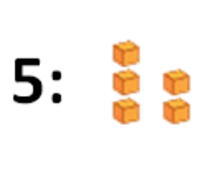
And, we’ll use stacks of 10 cubes to represent 10s:
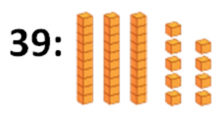
We’ll also do some subtraction problems with 100s today. In order to represent one hundred units, we’ll use a sheet of 100 units (that has 10 stacks, each one with 10 units). For example:

Vertical Subtraction
Let’s go ahead and start with vertical subtraction. To make things extra clear, we’ll solve two subtraction problems:
328 – 124
647 – 15
Let’s start with the first one. We’ll do it in two steps: the first one consists in setting up the subtraction problem and the second step is to solve the problem.
Setting Up the Problem
In order to solve a vertical subtraction problem, we have to make sure that we set it up correctly. In order to do so, we have to write the number we are subtracting right below the number it is being subtracted from. When we are setting up these two numbers, we should line them up so that the 1s columns, 10s column, etc. are lined up:
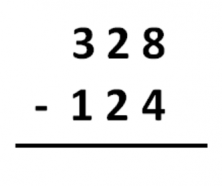
To make this clear, we’re going to bring in the math cubes:
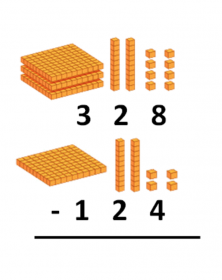
Solve the Problem
Now, it’s time to subtract, keeping in mind two very important things:
a) We are always going to subtract the numbers that fall in the same column
b) We start with the 1s column and continue towards the left.
So, let’s start with the 1s column:
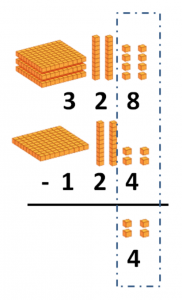
Now the 10s column:
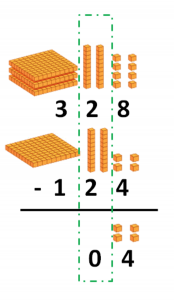
And lastly, the 100s column:
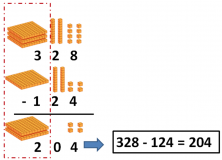
And what happens when there isn’t a number in a column to subtract? Well, we do the same thing as we did before: we set up the problem starting with the 1s column, going towards the left, and we subtract by columns, again, starting with the 1s column. Let’s go step by step with the example problem: 647 – 15
First, we set up the problem just like we learned how to do, and we start subtracting with the 1s column:
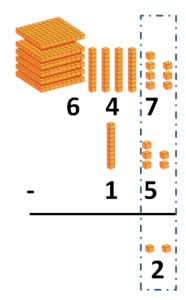
And now, we subtract the 10s column:
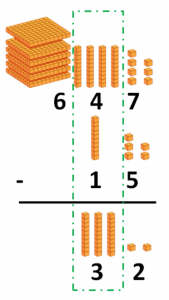
And lastly, we subtract the 100s column. The number 15 has 0 hundreds, so the number in the 100s place doesn’t change:
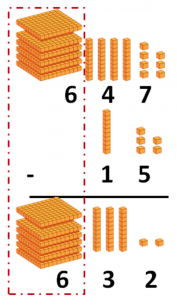
What happens if when we’re subtracting the numbers of a column, the number on top is less than the number below it? If this happens, we have to regroup.
If you want to practice vertical subtraction problems and to keep on learning math, you can create an account on Smartick and try it free!
Learn More:
- Learn and Practice Vertical Adding
- Learn to Subtract with Remainders
- How to Subtract with and without Borrowing
- How to Solve a Subtraction Problem with Regrouping
- Subtraction With and Without Carrying







